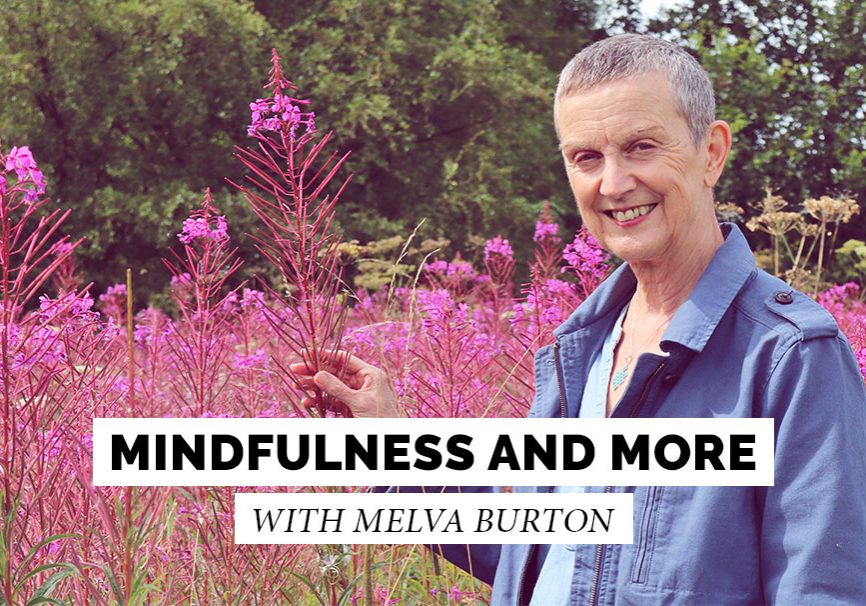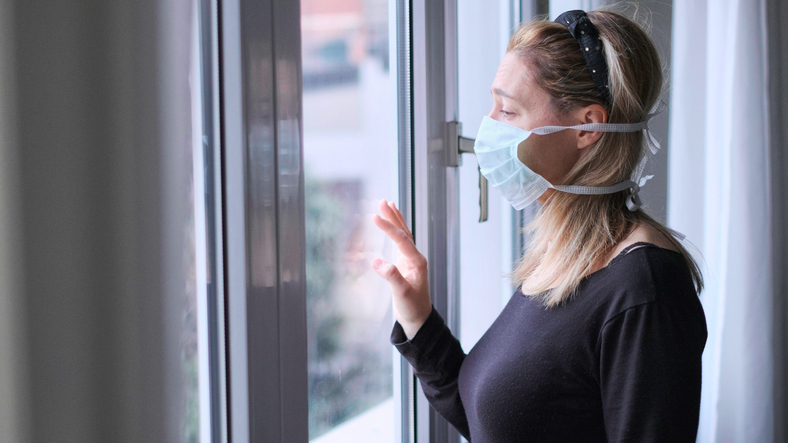
Back to normality? The stress of leaving lockdown
by Melva Burton
As I write this, the lockdown is being unlocked. We may be getting back to some sort of normal but the impact for many of us of the anxiety associated with the past months is likely to leave an imprint on our physical and mental wellbeing for a good while. Our threat system has been turned up high, our sympathetic nervous system kicked into action and our fight-flight response activated. We might have experienced uncomfortable physiological changes… muscle tension, nervous stomach, racing heartbeat, shallow breathing. If our bodies are flooded with adrenaline and cortisol for too long then we can be affected by stress-related medical conditions unless we find beneficial ways of dealing with it all.
Understanding a bit about the brain’s negativity bias has been helpful for me. Our ancestors worked hard to ensure that we survived as a species by being super alert to danger so that we were less likely end up as a tiger’s dinner. The evolutionary process has resulted in us having a brain that is hard wired to pay far more attention to the negative than the positive. I want my brain to keep me safe but I don’t want it focusing on the negative so much that I only notice the bad stuff and get stuck in a state of high alert. It seems as though sometimes us human beings make our lives more difficult than they need be.
Despite the brain being able to do impressive things, it is interesting to ponder on the fact that it can’t properly distinguish between what’s real and imagined. So, when we get caught up in thinking too much about upsetting stuff from the past or worrying about the future, our brain sets off the stress hormones because it senses that we are in danger right now. That’s not good for our mind or body. As I type, Jackson our lovely fox terrier, is sidling up to me. I’m not sure whether he’s looking for a cuddle or hoping for a treat. Either way he is totally engrossed in the present moment and not worrying about whether he got germs from someone on his walk this morning or whether there’s going to be more bad news tonight. I think I need to be more like him! So, what can I do to turn up my soothing system and turn down the negativity bias?

30 Second Reset
This practice is another option at times of panic, anxiety or overwhelm
- Stop and acknowledge your feelings, emotions, body sensations
- Say them out loud in a kind voice to yourself – remind your brain and body this is a normal response in a time of threat
- Steady yourself – feet on the ground, a hand on the stomach, a hand on the heart
- Take a deep breath in – breathe into your stomach – feel it balloon out
- Breathe out fully – allowing your out breath to be longer than your inbreath – feel your stomach contract
- Repeat three times or as long as you need until your heart beat starts to slow down
- Now notice what sensation in your body feels good – is it the in-breath? Your slowing heart? Your shoulders releasing? Your jaw relaxing? Whatever it is, focus on increasing this positive sensation
- Look around you – what brightens this moment? Blue sky? Sun? Flowers in a vase? A tree outside the window? A happy memory? A piece of music? Whatever it is, focus on this now
- Know that in this present moment you are safe and you can be calm
- It can help to keep photos, pictures, a meaningful quote or other positive anchors close, so you can refocus whenever you need to. Comfort and familiarity are important to help ground us
We have been through strange and difficult times but if we set an intention to weave these little grounding practices into our daily lives then we can help our minds and bodies feel safe again.
My mindfulness practice has certainly helped to ground me during these times when my threat system has been activated. By coming into the present moment I can move my attention away from the past or the future – and any associated anxiety – and come into the ‘now’. Maybe I’ll even begin to notice the good stuff around me, instead of focusing on the bad.
Learning about the ‘relaxation response’, a term coined by Dr Herbert Benson of the Harvard Medical school, offers us a way of counteracting the fight-flight response. The relaxation response activates the parasympathetic nervous system which brings the body back to pre-stress levels. Research has shown that its regular use can help with chronic stress related problems. Dr Benson suggests a number of options including deep abdominal breathing, focusing on a soothing word (such as ‘peace’ or ‘calm’), visualisation of tranquil scenes or repetitive prayers. There are many other ways to summon the relaxation response. He points out that “anything that breaks the train of everyday thought will evoke this physiological state.” This includes participating in repetitive sports such as running, letting go of tension through progressive muscular relaxation, practicing yoga, knitting, crocheting, playing musical instruments. “You know how when you play an instrument and you become ‘one’ with that instrument and the time flits away? That is the relaxation response. You know the high you get from running? That is the relaxation response coming about by the repetitive motion of your footfall.” There are so many ways that we can quieten our minds to create inner peace and better health… we need to be on our own side and remember to train our brains to practice the relaxation response!
One way I have been practicing being on my own side over the past months is through joining in the very grounding daily Zoom Corona Comfort meditation sessions offered by Alistair Appleton. You may have seen Alistair, who is well known as a TV presenter, on Escape to the Country. He is also a very highly regarded therapist and meditation teacher who set up Mindsprings to explore the uses and benefits of meditation in the modern world. I have gained a lot from these sessions and have been introduced to simple yet effective ways of dealing with the impact of Covid worries and the fight-flight response. I have learned that exhaling deeply – and noisily! – is a good way of activating the parasympathetic nervous system. Shaking out my hands and arms helps get rid of the fight energy and shaking out my feet and legs does the same for the flight energy that might be trapped in my body. Give it a try and see what you think although it may not be a good idea to do it too vigorously when you are waiting in a queue outside Asda!
Practice techniques
Five Senses Practice
This practice is a handy way of calming down mind and body. To begin you step into the present by taking a few refreshing, comfortable and even breaths before focusing on:
- Five things you can see – textures, colours, details in pictures, plants, flowers etc.
- Four things you can hear – birds, traffic, footsteps, dogs, children, breathing, rain etc.
- Three things you can touch – feet on the ground, hands in your lap, clothes on skin etc.
- Two things you can smell – food cooking, perfume, flowers, cut grass, fresh air etc.
- One thing you can taste – tea or coffee flavour, toothpaste, saliva etc
Then check in with yourself and compare it with how you felt before you came into the ‘now’ for these few moments. Maybe your head isn’t as full of busyness and worrying thoughts as it was a few minutes ago. Maybe you are a bit more relaxed.
30 Second Reset
This practice is another option at times of panic, anxiety or overwhelm
- Stop and acknowledge your feelings, emotions, body sensations
- Say them out loud in a kind voice to yourself – remind your brain and body this is a normal response in a time of threat
- Steady yourself – feet on the ground, a hand on the stomach, a hand on the heart
- Take a deep breath in – breathe into your stomach – feel it balloon out
- Breathe out fully – allowing your out breath to be longer than your inbreath – feel your stomach contract
- Repeat three times or as long as you need until your heart beat starts to slow down
- Now notice what sensation in your body feels good – is it the in-breath? Your slowing heart? Your shoulders releasing? Your jaw relaxing? Whatever it is, focus on increasing this positive sensation
- Look around you – what brightens this moment? Blue sky? Sun? Flowers in a vase? A tree outside the window? A happy memory? A piece of music? Whatever it is, focus on this now
- Know that in this present moment you are safe and you can be calm
- It can help to keep photos, pictures, a meaningful quote or other positive anchors close, so you can refocus whenever you need to. Comfort and familiarity are important to help ground us
We have been through strange and difficult times but if we set an intention to weave these little grounding practices into our daily lives then we can help our minds and bodies feel safe again.




